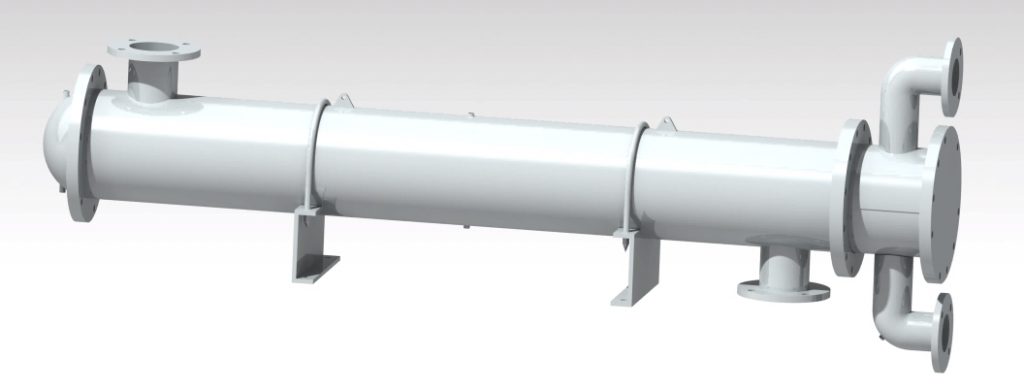The material of construction (MOC) for a water-cooled oil cooler depends on factors like the type of oil, operating temperature, pressure, and corrosion resistance requirements. Common materials include:
1. Shell & Tube Heat Exchanger (Common for Large Oil Coolers)
- Shell Material:
- Carbon Steel (CS) – For general industrial applications.
- Stainless Steel (SS 304/316) – For corrosive environments or high-purity requirements.
- Tube Material:
- Admiralty Brass – Good for freshwater cooling.
- Copper-Nickel (Cu-Ni 90/10 or 70/30) – Excellent seawater corrosion resistance.
- Stainless Steel (SS 304/316) – For high-pressure or aggressive fluids.
- Tube Sheets:
- Carbon Steel (CS) with Cladding or Stainless Steel (SS 304/316).
- End Caps/Headers:
- Cast Iron, Carbon Steel, or Stainless Steel.
- 2. Plate Type Oil Coolers (Compact & Efficient)
- Plates Material:
- Stainless Steel (SS 316) – Most common for water-oil heat exchange.
- Titanium (Ti) – For seawater or highly corrosive cooling water.
- Gaskets:
- Nitrile (NBR), EPDM, or Viton – Depending on temperature and oil type.
- 3. Brazed Plate Heat Exchangers (For Hydraulic Oil Cooling)
- Stainless Steel (SS 304/316) plates with copper or nickel brazing.
- Key Considerations:
- For seawater cooling: Cu-Ni or Titanium tubes/plates are preferred.
- For high-pressure systems: Stainless steel or carbon steel with corrosion protection.
- For food/pharma applications: SS 316 or higher-grade stainless steel.
